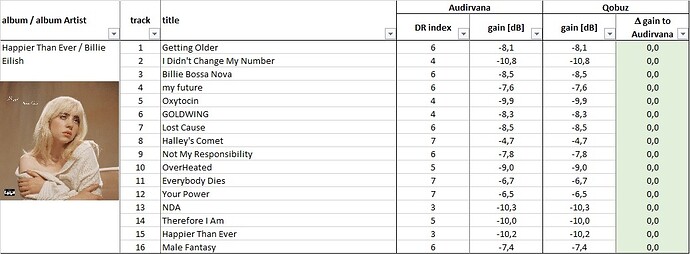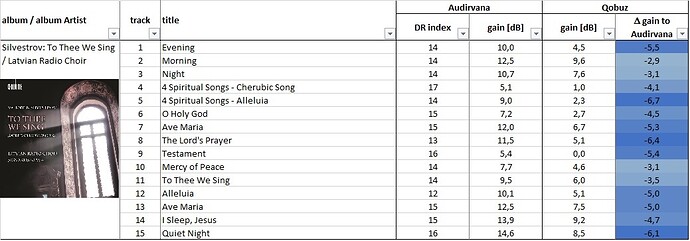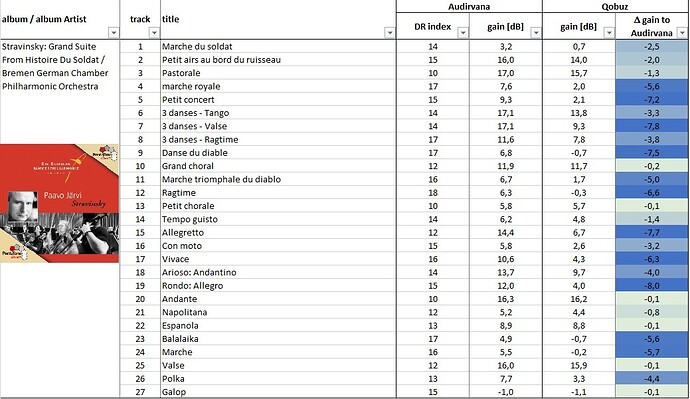The latest AS version 1.11 has introduced the option to use Qobuz’s replay gain values to level loudness differences between tracks. However, with some albums/tracks there are significant differences between the gain computed by Audirvana’s built-in replay gain analysis tool and the values provided by Qobuz. Such tracks, downloaded from Qobuz and loudness-analyzed by Audirvana, result in replay gain values that can differ from Qobuz values by up to 10 dB for otherwise seemingly identical streams – that’s huge! The good news is that for music listeners preferring the most popular genres (with limited dynamic range) this is not relevant, so you can stop reading here.
The rest of this post is a bit of analysis and small-sample statistics… for those of you who are nerdy enough to still be interested.
Replay gain is calculated by Audirvana in compliance with industry standards (EBU R128 / ITU-R BS.1770). Apparently Audirvana uses a reference loudness of -18 LUFS (I cross-checked with other EBU compatible analyzer software and can confirm this). Qobuz’s gain values tend to differ from this standard if music has a high dynamic range, typically with a DR value of 12 or more. Any music with DR < 10 will result in gain values practically identical to standard.
Out of curiosity I checked 10 albums with more than 100 tracks in total. It cannot be excluded that some of the analyzed local albums have been changed in Qobuz’s repository since I downloaded them, e.g. were replaced by a re-mastered version (or downloaded files could be different from their streamed version). However, I think this is rather unlikely (for reasons I will not elaborate on here).
As examples here are two pop albums, significantly compressed in line with current genre standards and in consequence with small DR indices. Audirvana and Qobuz state the same gains for these tracks.
Moving to the other end of the spectrum, classical albums often are very dynamic and typically are (mostly) uncompressed. Two exemplary albums reveal DR indices up to 18. The differences between Audirvana and Qobuz are clearly significant.
The chart below is a summary of this little analysis. Each dot represents one track (you see less dots than there are tracks because they pile up on top of each other in the region from DR 3 to 11). It is visually apparent that the bigger the DR index becomes, the more Qobuz’s loudness calculations deviate from the EBU/ITU standard. This correlation is also expressed statistically in terms of R^2, i.e. the linear regression correlation coefficient.
(For completeness lets add that the correlation is much weaker with the other dynamic range measure, the EBU R128 loudness range.)
The big question of course is how Qobuz internally calculates replay gain/level matching. Does anybody have a clue? @Antoine Can you share some internal knowhow?




